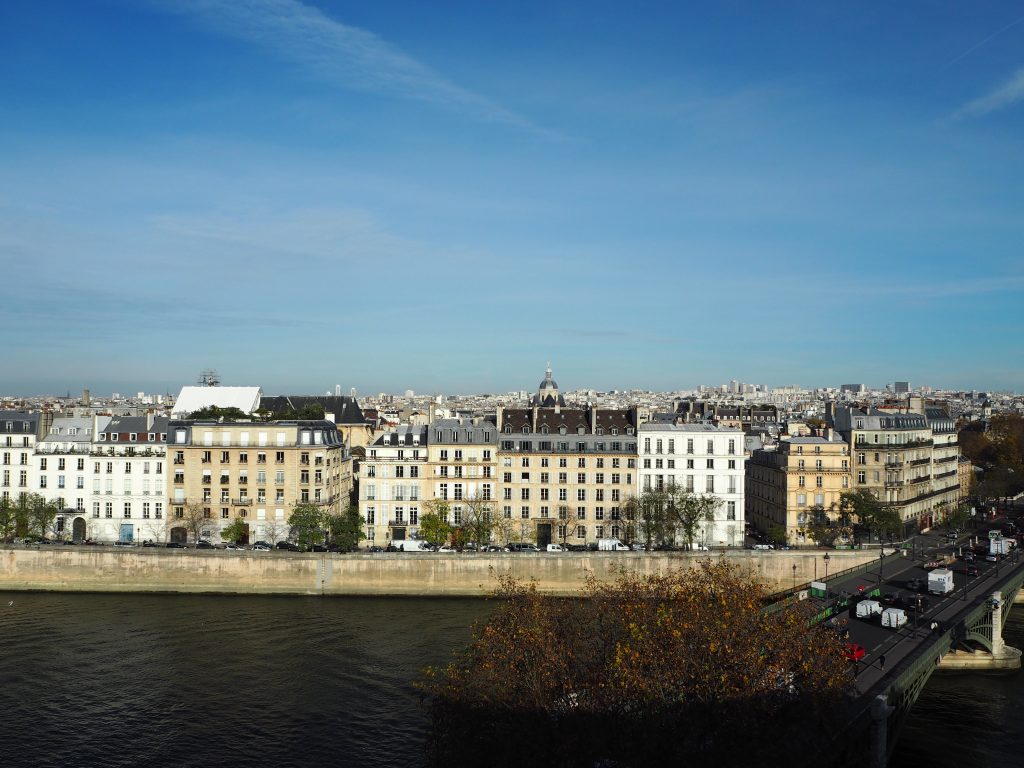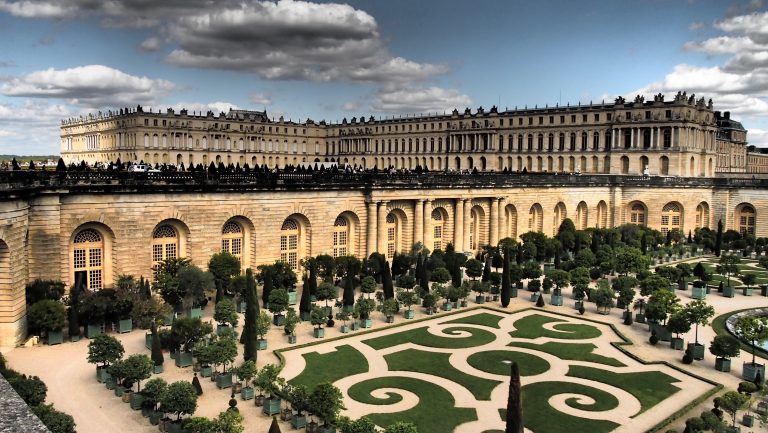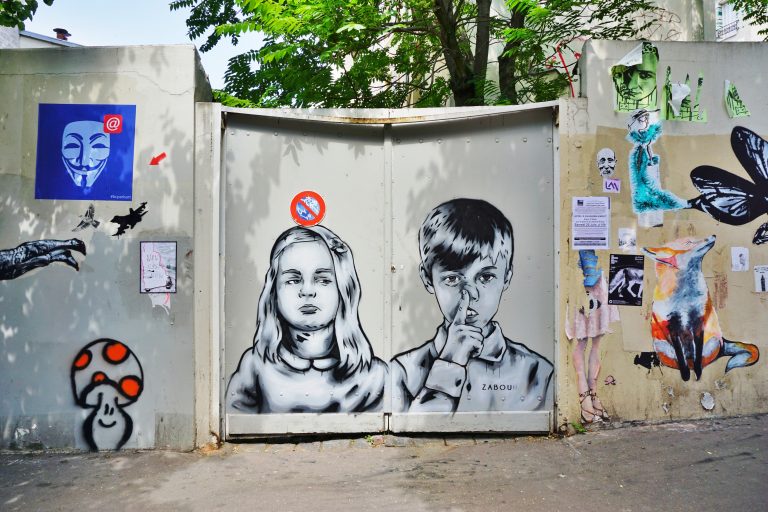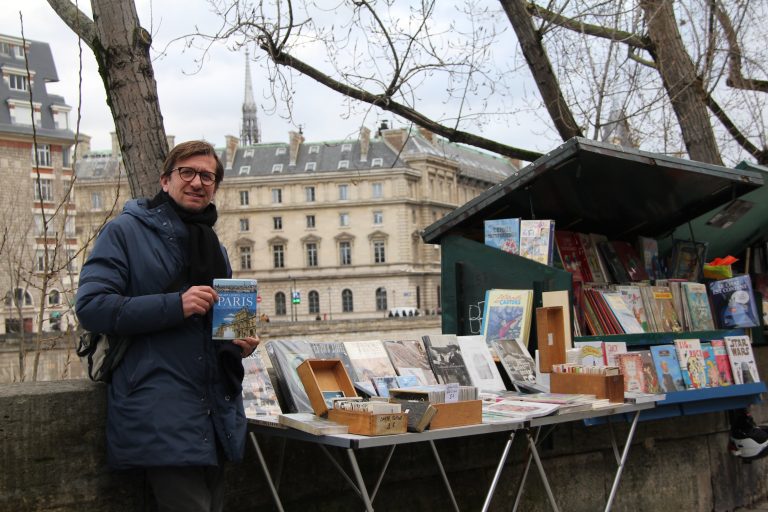SEE the city
I was awestruck the first time I saw the Eiffel Tower in person, felt goosebumps tickling my skin on arrival at the Pyramids in Giza, and was overcome with emotion as my plane descended over the glistening harbour of Béjaïa in Algeria.
When you arrive in a new place, it’s nice to get up high in order to grasp the lie of the land you’re about to explore. Some places charge for the fantastic view, but others are free or cost just a handful of euros.
Images can imprint themselves on your mind for decades, so ouvrez grand vos yeux (open your eyes wide) and really, truly take in the City of Light.
Survey & see
La Tour Eiffel (The Eiffel Tower) – naturellement!
Champ de Mars, 5 avenue Anatole France, 75007
Synonymous with Paris and 325 metres tall, la tour is the obvious place to get a bird’s-eye view of the city.
This striking wrought-iron lattice tower, the bold creation of engineer Gustave Eiffel, was the main attraction at the 1889 Exposition Universelle (World’s Fair), which celebrated the centenary of the French Revolution.
Although originally a temporary exhibit that divided popular opinion (icon or eyesore?), the structure soon became a permanent and much beloved symbolic landmark.
Of course, the view from the top is incredible, but you’ll likely be shoulder to shoulder with hundreds of other tourists, jostling for position (well, it is among the most-visited ticketed monuments in the world). Go up, by all means – when I first did, at the age of 17, I ran around Paris on a high for the rest of the day! – but you may want to skip the queue with an express-lane ticket and a host.
Le Centre Pompidou (The Pompidou Centre)
Place Georges-Pompidou, 75004
Like the Eiffel Tower, the Pompidou Centre dramatically redefined the city skyline. Architects Renzo Piano and Richard Rogers designed this industrial-looking ‘inside-out’ structure in 1973, in response to President Georges Pompidou’s call for a cultural centre. The resulting radical building, a brightly coloured network of metal and glass, was an instant spectacle upon its opening in 1977 and still draws attention to itself today – you can spot it from many other elevated city locations. Housing the Musée National d’Art Moderne (the National Museum of Modern Art), along with an incredible collection of books, a music-research centre, a cinema, a bookshop and more, the Pompidou is sure to please any contemporary-art lover.
If you’re pressed for time, head straight for the top floor to take in the sweeping views of city rooftops.
Alternatively, book a table at the chic Georges restaurant on the sixth floor and dine while gazing across the capital.
L’Institut du Monde Arabe (The Arab World Institute)
1 rue des Fossés-Saint-Bernard, place Mohammed-V, 75005
Don’t miss the high-tech IMA building – it’s brilliant, in both senses of the word. Designed by a team of architects including Jean Nouvel and completed in 1987, the institute features two impressive facades: a curved glass- and aluminium-clad structure that mirrors the neighbouring buildings, and a metallic mosaic screen that’s a dynamic reinterpretation of traditional Arabic latticework. Thanks to 240 photosensitive, mechanical apertures, the screen’s geometric elements automatically open and close to control the amount of light and heat entering the building, to stunning effect.
If you’re heading here from the Rive Droite (Right Bank), give yourself half an hour for a leisurely stroll from Hôtel de Ville, over the bridges. The view from the free panoramic lookout on the top floor will give you a real buzz, which you can boost with a coffee from the downstairs corner café. After gazing over the Seine, the Île de la Cité and Notre-Dame, be sure to visit the museum. Though an Arab–Islamic centre may seem irrelevant to a Paris trip, it’s not. The city has long-held ties to the Arab world, which has resulted in a large Arab population and a profound influence on local culture. You’ll find a strong permanent collection as well as fascinating temporary exhibitions (past shows include Osiris: The Submerged Mysteries of Egypt and Oriental Christians: 2000 Years of History).
La Grande Roue (The Ferris Wheel)
Place de la Concorde, 75008
This travelling Ferris wheel sets up in the place de la Concorde every year, revolving from around November to May. The ride is surprisingly thrilling, especially when your gondola is dangling at the top and you hear creaking and think you might be stuck! The view over Paris is unparalleled – you’re literally in mid-air so you can suddenly grasp the city’s topography (look for the jagged rise of Montmartre’s hill). You’ll get a feel for Paris’s personality and sense its life!
Once you’re back on earth, check out the nearly 23-metre-tall Luxor Obelisk. Now standing in the centre of the square, this ancient monument once marked the entrance to Luxor Temple in Egypt. Next, take a stroll through the formal Jardin des Tuileries (Tuileries Garden) to admire its picturesque flowers, lakes and sculptures until you pass under the Corinthian-style Arc de Triomphe du Carrousel. Built from 1806 to 1808, this triumphal arch commemorates Napoleon’s military victories of 1805. Here, you’ll be just outside the mighty Musée du Louvre (Louvre Museum), where you may like to spend the rest of the day, feasting your eyes on art from across the ages and all over the world. (Read about it in my book The Art Lover’s Guide to Paris www.rubytv.net/books)
Basilique du Sacré-Coeur (Sacred Heart Basilica) & Montmartre
35 rue du Chevalier de la Barre, 75018
No trip to Paris is complete without a visit to delightful Montmartre. As a separate commune on a hill outside Paris proper until 1860, the district developed a village vibe it retains today. During the Belle Époque, this bohemian painters’ neighbourhood was the cradle of impressionism, an art movement that broke with convention. And in 2001 the whimsical film Amélie reminded us of Montmartre’s charms, and the world fell in love with this quaint part of Paris all over again.
Although touristy, this is a special part of Paris. For a truly breathtaking view, climb to the top of the Sacré-Coeur basilica. Don’t want to wait with the crowd? Stick to the steps for an equally sensational view, which is particularly good at sunset. Have fun picking out all the landmarks: the Pompidou Centre, Notre-Dame and the Panthéon, for starters.
At the entrance to the church itself (which is separate from the basilica’s), you’ll probably have to wait for security to conduct bag checks. Never mind – your patience will be rewarded when you enter and marvel at the apse mosaic of Christ. At 475 square metres, this 1923 work is one of the largest mosaics in the world.
At its centre a glowing, newly risen Christ, wearing white robes and a shining halo, stands with outstretched arms and displays his golden heart. Whether you’re religious or not, gazing up at this stunning artwork can be an intensely moving experience. I found myself here late one evening, sitting in shock after a sudden break-up. I stared up at the mosaic for hours, fell into a kind of trance, and felt somehow deeply consoled.
Read more about the architecture in my book The Architecture Lover’s Guide to Paris.
Parc de Belleville (Belleville Park)
47 rue des Couronnes, 75020
For a relaxed atmosphere and some local colour, head for Parc de Belleville. The lookout here provides a great view over the city. Afterwards, stroll down through the park and discover funky, popular Belleville (my ‘hood!) and its vibrant street art. Then continue down to the attractive Canal Saint-Martin and its clutch of on-trend cafés and boutiques.





